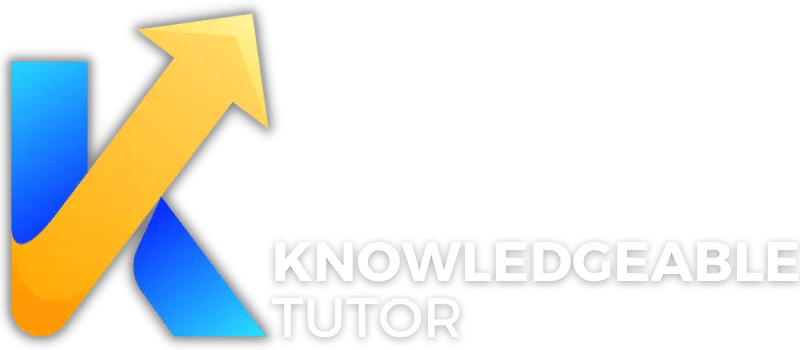Online Tutoring Rates:
How to Price Your Services

Fanie Naude
CEO & Founder of Knowledgeable Tutor, Buznet Direct, YMC & Naude Consulting

Fanie Naude
CEO & Founder of Knowledgeable Tutor, Buznet Direct, YMC & Naude Consulting
In This Article
1. Introduction to Online Tutoring Rates
2. Factors Influencing Online Tutoring Rates
3. Pricing Strategies for Tutors
4. How to Determine Your Pricing
5. Communicating Pricing to Clients
6. Legal and Ethical Considerations
7. Technology and Tools for Pricing
8. Case Studies, Real-Life Examples, and Success Stories
The world of online tutoring is vast and dynamic, encompassing various subjects, platforms, and methodologies. The article delves into the intricacies of online tutoring, including ethical considerations, pricing strategies, market positioning, and real-life examples of successful online education platforms. It also explores the future trends in online tutoring, emphasizing the role of technology in enhancing student engagement and learning outcomes.
Summary of Key Points
- Online Tutoring Rates: Understanding and determining the right pricing strategy is crucial for success. It involves considering various factors, implementing different pricing models, and communicating effectively with clients.
- Ethical Considerations: Adhering to legal and ethical norms builds trust and credibility in the online tutoring business.
- Technology and Tools: Embracing the right technology ensures seamless tutoring sessions, enhancing student engagement and learning outcomes.
- Real-Life Examples: The article highlights real-life examples like VIPKid and Duolingo, showcasing how technology can break barriers and transform education.
- Future Trends: The future of online tutoring includes personalized learning, AI-driven platforms, and global accessibility, shaping the way education is delivered and experienced.

1. Introduction to Online Tutoring Rates
Definition and Importance
Online tutoring rates refer to the pricing structure that tutors and educational institutions set for their online teaching services. These rates are not merely numerical values but represent the quality, expertise, and value that the tutor brings to the educational experience.
As Benjamin Franklin once said, "An investment in knowledge pays the best interest." In the context of online tutoring, this investment is not just about the monetary aspect but also the time, effort, and resources that both tutors and students invest in the learning process.
Understanding and setting appropriate online tutoring rates is crucial for several reasons:
- Quality Assurance: The price often reflects the quality of education. Competitive pricing can attract more students, but underpricing may lead to a perception of lower quality.
- Sustainability: Tutors must consider their expenses, time, and effort to ensure that the pricing model is sustainable in the long run.
- Market Positioning: Pricing plays a vital role in positioning the tutor in the market. It can help in targeting specific segments of the student population.
Market Overview
The online tutoring market has witnessed exponential growth, especially in the wake of the COVID-19 pandemic. According to Grand View Research, the global online tutoring market size was valued at USD 4.81 billion in 2019 and is expected to grow at a compound annual growth rate (CAGR) of 15.7% from 2020 to 2027.
Here's a snapshot of the current market scenario:
- Diverse Subjects: From mathematics to languages, online tutoring covers a wide range of subjects.
- Various Platforms: Numerous platforms offer online tutoring services, including individual tutors, educational institutions, and specialized e-learning platforms.
- Global Reach: Online tutoring transcends geographical boundaries, allowing tutors to reach students worldwide.
- Technological Advancements: The integration of advanced technologies like AI and VR is enhancing the online learning experience.

2. Factors Influencing Online Tutoring Rates
Qualification and Experience
The qualification and experience of the tutor are paramount in determining the online tutoring rates. A tutor with a Ph.D. in a subject and years of teaching experience can command higher rates compared to someone just starting.
- Educational Background: Higher degrees and specialized certifications often justify higher rates.
- Teaching Experience: Experienced tutors may have developed effective teaching methodologies and can provide personalized attention.
- Reputation: Tutors with a strong reputation and positive reviews can charge premium rates.
Subject Complexity
The complexity of the subject matter also plays a significant role in pricing. Subjects that require specialized knowledge or are in high demand may command higher rates.
- Specialized Subjects: Subjects like advanced physics or programming languages may require specialized skills.
- Demand and Supply: High demand subjects with fewer qualified tutors can lead to higher pricing.
Geographical Location
Geographical location can influence online tutoring rates in various ways:
- Cost of Living: Tutors living in areas with a higher cost of living may charge more.
- Local Market Conditions: The local demand and competition can affect pricing.
- International Reach: Tutors catering to international students may consider currency exchange rates and international market trends.
In the words of Nelson Mandela, "Education is the most powerful weapon which you can use to change the world." By understanding and implementing effective pricing strategies, tutors can contribute to this global change, one student at a time.

3. Pricing Strategies for Tutors
In the world of online tutoring, pricing is not a one-size-fits-all approach. It requires a strategic mindset and an understanding of various pricing models that align with the tutor's expertise, the subject's complexity, and the students' needs. As Warren Buffett wisely stated, "Price is what you pay. Value is what you get." Let's explore the different pricing strategies that tutors can employ to offer value to their students.
Hourly Rates
Definition and Application
Hourly rates are the most common pricing strategy in online tutoring. It involves charging students based on the number of hours of tutoring provided.
- Flexibility: Allows students to book sessions as needed.
- Transparency: Clear understanding of what is being charged.
- Ease of Calculation: Simple to calculate and understand for both tutors and students.
Considerations
- Market Research: Understanding the average hourly rates for similar subjects and expertise levels.
- Time Management: Tracking the exact time spent on tutoring.
For more insights on how to become an online tutor, visit The Comprehensive Guide on How to Become an Online Tutor.
Package Pricing
Definition and Application
Package pricing involves offering a set number of tutoring sessions at a bundled price, often at a discount compared to individual hourly rates.
- Commitment: Encourages students to commit to multiple sessions.
- Savings: Offers savings for students who purchase in bulk.
- Planning: Allows tutors to plan their schedule in advance.
Considerations
- Package Structure: Deciding the number of sessions and the discount rate.
- Cancellation Policy: Establishing clear policies for cancellations or rescheduling.
Explore more on Choosing the Right Subject to Tutor Online to align your package pricing with subject demand.
Subscription Models
Definition and Application
Subscription models involve students paying a recurring fee, usually monthly, for access to regular tutoring sessions.
- Steady Income: Provides a predictable income stream for tutors.
- Ongoing Engagement: Encourages continuous learning and engagement.
- Customization: Allows for personalized learning paths and long-term relationships with students.
Considerations
- Subscription Tiers: Offering different levels of access or benefits at various price points.
- Renewal and Cancellation: Clear policies for renewals, cancellations, and refunds.
Learn more about Building Your Online Tutoring Business: Tips and Strategies to effectively implement subscription models.
The pricing strategies for online tutoring are diverse and multifaceted. Whether opting for hourly rates, package pricing, or subscription models, tutors must align their pricing with their teaching philosophy, market positioning, and the value they aim to provide.
The choice of pricing strategy can significantly impact the tutor's business growth, student retention, and overall success in the online education space. As tutors explore these strategies, they must remain adaptable and responsive to the ever-changing dynamics of online education.

4. How to Determine Your Pricing
Determining the right pricing for online tutoring services is a nuanced process that requires careful consideration and strategic planning. It's akin to finding the perfect recipe, where the right blend of ingredients leads to a delightful dish. As the renowned economist, Adam Smith, once said, "The real price of everything is the toil and trouble of acquiring it." Here's how tutors can determine their pricing by analyzing competitive factors, understanding their unique value proposition, and conducting a thorough cost analysis.
Competitive Analysis
Definition and Application
Competitive analysis involves researching and analyzing the pricing strategies of other tutors in the same field or subject area.
- Market Trends: Understanding the prevailing pricing trends in the market.
- Benchmarking: Comparing one's pricing with competitors to find a competitive edge.
- Positioning: Identifying a unique position in the market, whether premium or budget-friendly.
Considerations
- Data Collection: Gathering accurate data on competitors' pricing.
- Segmentation: Comparing with similar subjects, qualifications, and experience levels.
For more insights on understanding different online tutoring platforms, visit Understanding Different Online Tutoring Platforms.
Value Proposition
Definition and Application
The value proposition is the unique value that a tutor offers to students, differentiating them from competitors.
- Unique Selling Points (USPs): Identifying what sets the tutor apart, such as specialized expertise, personalized attention, or innovative teaching methods.
- Perceived Value: Understanding what students value most and are willing to pay for.
- Brand Image: Building a brand that resonates with the target audience.
Considerations
- Communication: Clearly communicating the value proposition to potential students.
- Alignment: Ensuring that pricing aligns with the perceived value.
Learn more about Marketing Yourself as an Online Tutor to effectively convey your value proposition.
Cost Analysis
Definition and Application
Cost analysis involves calculating the total costs involved in providing tutoring services and ensuring that pricing covers these costs and generates a profit.
- Direct Costs: Costs directly related to tutoring, such as materials, software subscriptions, or specialized equipment.
- Indirect Costs: Overhead costs such as internet, marketing, or administrative expenses.
- Profit Margin: Determining the desired profit margin to achieve financial goals.
Considerations
- Breakeven Analysis: Calculating the point at which revenue equals costs, to ensure sustainability.
- Scalability: Considering how costs may change as the tutoring business grows.
Explore more on Building Your Online Tutoring Business: Tips and Strategies to conduct a comprehensive cost analysis.
Determining the right pricing for online tutoring is a multifaceted process that requires a blend of market insights, self-awareness, and financial acumen. It's not merely about matching competitors' prices but about understanding one's unique value, aligning with market trends, and ensuring financial sustainability.
Tutors must approach pricing as both an art and a science, balancing competitive pressures with their unique value and cost structure. The journey towards finding the right price is a continuous exploration, filled with learning, adaptation, and growth.

5. Communicating Pricing to Clients
In the world of online tutoring, communicating pricing to clients is not merely a transactional process but an integral part of building trust, setting expectations, and fostering long-term relationships. As the great writer and philosopher, Ralph Waldo Emerson, once said, "The value of a principle is the number of things it will explain." The principle of transparent and effective communication in pricing can indeed explain and enhance the entire client-tutor relationship. Here's how:
Transparency
Definition and Application
Transparency in pricing means providing clear, unambiguous, and complete information about the cost of tutoring services.
- Clear Breakdown: Providing a detailed breakdown of what the price includes, such as materials, software access, or additional support.
- No Hidden Fees: Ensuring that there are no hidden or unexpected charges.
Considerations
- Accessibility: Making pricing information easily accessible on the website or marketing materials.
- Consistency: Maintaining consistent pricing across different platforms and communications.
For more on this, explore How to Handle Payment and Invoicing for Your Tutoring Services.
Value Highlighting
Definition and Application
Value highlighting involves emphasizing the unique benefits and value that the tutoring services offer, aligning with the price.
- Emphasizing USPs: Highlighting unique selling points that justify the price, such as specialized expertise or personalized learning plans.
- Connecting with Needs: Demonstrating how the services meet the specific needs and goals of the students.
Considerations
- Storytelling: Using engaging narratives or parables to convey the value. For example, sharing a success story of a student who achieved remarkable improvement through personalized tutoring.
- Visual Aids: Utilizing visual aids such as charts or infographics to represent the value.
Learn more about Building a Personal Brand as an Online Tutor to effectively highlight your value.
Effective Communication Channels
Definition and Application
Choosing the right channels to communicate pricing is essential to reach the target audience effectively.
- Website: Displaying pricing on the website with clear explanations and visuals.
- Email: Sending personalized emails with tailored pricing packages.
- Social Media: Utilizing platforms like Facebook or LinkedIn to promote special offers or packages.
Considerations
- Personalization: Tailoring communication to individual client needs and preferences.
- Responsiveness: Being available to answer queries and provide clarifications on pricing.
For insights on using social media effectively, visit Using Social Media for Your Online Tutoring Business.
Communicating pricing to clients in the online tutoring realm is a multifaceted task that goes beyond mere numbers. It's about building trust, aligning expectations, and creating a sense of value that resonates with the clients' needs and aspirations.
By embracing transparency, highlighting value, and leveraging effective communication channels, tutors can turn pricing communication into a strategic tool that enhances client relationships and builds a loyal customer base.
In the ever-evolving landscape of online education, where competition is fierce and clients are discerning, the art of communicating pricing stands as a testament to the tutor's professionalism, integrity, and commitment to excellence. It's not just about what you charge; it's about how you convey it, why you believe in it, and how you make it resonate with those you seek to serve.
For those seeking to master this art, the Knowledgeable Tutor's comprehensive guide on online tutoring offers a wealth of insights, strategies, and tools to navigate the complex yet rewarding journey of pricing communication. In the pursuit of excellence, every detail matters, and communicating pricing is indeed a detail that holds profound significance.

6. Legal and Ethical Considerations
In the realm of online tutoring, legal and ethical considerations are paramount. They form the bedrock of a responsible and professional tutoring practice. As the renowned legal scholar Roscoe Pound aptly stated, "The law must be stable, but it must not stand still." This wisdom applies to the dynamic field of online tutoring, where legal norms and ethical standards must adapt to technological advancements and evolving educational needs.
Contracts and Agreements
Definition and Application
Contracts and agreements are legally binding documents that outline the terms and conditions of the tutoring services.
- Written Agreements: Having a written contract that details the scope of services, pricing, cancellation policies, and confidentiality.
- Customization: Tailoring contracts to suit individual client needs and specific tutoring arrangements.
Considerations
- Clarity: Ensuring that the contract is clear and understandable to all parties involved.
- Compliance: Adhering to legal regulations and industry standards.
For more insights, explore Creating a Safe and Comfortable Online Learning Environment.
Taxes and Regulations
Definition and Application
Taxes and regulations refer to the legal obligations related to taxation and compliance with governmental rules.
- Tax Reporting: Understanding and fulfilling tax obligations, including income tax and sales tax if applicable.
- Licensing and Certification: Complying with any required licenses or certifications for specific subjects or regions.
Considerations
- Local Laws: Being aware of and complying with local and international laws related to online tutoring.
- Professional Guidance: Seeking legal or financial advice to ensure full compliance.
Learn more about Qualifications for Becoming an Online Tutor.
Ethical Practices
Definition and Application
Ethical practices involve conducting tutoring services with integrity, honesty, and respect for students' rights and individuality.
- Confidentiality: Protecting students' personal information and academic records.
- Non-Discrimination: Ensuring equal access and fair treatment regardless of race, gender, religion, or other factors.
- Honest Marketing: Representing services and qualifications truthfully in marketing materials.
Considerations
- Professional Boundaries: Maintaining appropriate boundaries in the tutor-student relationship.
- Continuous Learning: Staying updated on ethical guidelines and best practices in online tutoring.
For a deeper understanding, visit Ethical Practices in Online Tutoring.
Legal and ethical considerations in online tutoring are not mere formalities but essential components of a responsible and successful practice. They reflect a tutor's commitment to professionalism, integrity, and excellence.
By diligently addressing contracts, taxes, regulations, and ethical practices, tutors not only safeguard themselves legally but also build trust and credibility with clients. They create an environment where learning thrives, and values are upheld.
In the words of Mahatma Gandhi, "Morality is the basis of things, and truth is the substance of all morality." In the context of online tutoring, legal and ethical considerations are indeed the substance that sustains the noble endeavor of education.
The journey towards legal compliance and ethical conduct is a continuous one, filled with learning, reflection, and adaptation. It's a path that leads not just to legal safety but to the very heart of what it means to be an educator in the digital age. It's a path worth walking with diligence, wisdom, and unwavering commitment to the values that make education not just a profession but a calling.

7. Technology and Tools for Pricing
In the modern era of online tutoring, technology and tools play a pivotal role in determining and managing pricing strategies. As the great inventor Thomas Edison once said, "There's a way to do it better - find it." This pursuit of efficiency and innovation is at the core of utilizing technology for pricing in online tutoring.
Online Calculators
Definition and Application
Online calculators are digital tools that allow tutors to input various factors and calculate the optimal pricing for their services.
- Customization: Tutors can input their qualifications, experience, subject complexity, and other variables to calculate tailored pricing.
- Accessibility: These calculators are often available online, providing easy access and user-friendly interfaces.
Considerations
- Accuracy: Ensuring that the calculator is designed specifically for the tutoring industry and considers all relevant factors.
- Updates: Regular updates to reflect changes in market trends and economic conditions.
Explore more about pricing with Online Tutoring Rates: How to Price Your Services.
E-commerce Integration
Definition and Application
E-commerce integration involves connecting online tutoring platforms with payment gateways and shopping carts, allowing seamless transactions.
- Payment Options: Providing multiple payment options such as credit cards, PayPal, etc.
- Automated Invoicing: Generating automatic invoices and receipts for clients.
Considerations
- Security: Ensuring that the payment gateway is secure and complies with legal regulations.
- User Experience: Creating a smooth and hassle-free payment process for clients.
Learn more about handling payments at How to Handle Payment and Invoicing for Your Tutoring Services.
Additional Tools and Platforms
Definition and Application
Various other tools and platforms can assist in pricing and financial management.
- Accounting Software: Tools like QuickBooks or FreshBooks for managing finances, tracking income, and expenses.
- Market Analysis Tools: Platforms that provide insights into market trends, competitor pricing, and demand analysis.
Considerations
- Integration: Ensuring that the tools integrate well with existing systems and processes.
- Cost-Effectiveness: Evaluating the cost and value provided by these tools.
For more insights on technology, visit Tools and Technology for Effective Online Tutoring.
Real-life Example: Utilizing Technology for Pricing
A real-life example of utilizing technology for pricing can be seen in the approach of many successful online tutors who leverage platforms like Teachable or Thinkific. These platforms not only host online courses but also provide integrated pricing tools, payment gateways, and market analysis features. By embracing such technology, tutors can focus more on teaching and less on administrative tasks, enhancing efficiency and professionalism.
The integration of technology and tools for pricing in online tutoring is not merely a trend but a necessity in the digital age. It represents a convergence of innovation, efficiency, and professionalism that aligns with the evolving needs of both tutors and students.
By leveraging online calculators, e-commerce integration, and various other tools, tutors can navigate the complex landscape of pricing with precision and confidence. They can create pricing strategies that are not only competitive but also reflective of their unique value proposition and market positioning.
In the words of Steve Jobs, "Innovation distinguishes between a leader and a follower." In the context of online tutoring, embracing technology for pricing is indeed an act of leadership. It's a commitment to excellence, adaptability, and continuous growth.

8. Case Studies, Real-Life Examples, and Success Stories
In the realm of online education, success stories, real-life examples, and case studies are not only inspiring but also serve as a testament to the effectiveness of digital learning platforms. They provide tangible evidence of the impact that online tutoring can have on both students and educators. Let's delve into some real-life examples and case studies that demonstrate the success of online tutoring.
1. VIPKid: Bridging the Gap Between East and West
VIPKid is a global online education platform that connects children in China with native English-speaking teachers in the U.S. and Canada. The platform has empowered over 700,000 students and 100,000 teachers, providing personalized learning experiences.
Real-Life Example: Cindy Mi, the founder of VIPKid, was inspired by her own struggles with English. Her vision led to the creation of a platform that has not only helped children in China learn English but also provided employment opportunities for teachers across the globe. Read more about Cindy Mi's story.
2. Khan Academy: Democratizing Education
Khan Academy is a non-profit educational organization that offers free online courses, lessons, and practice exercises. It has reached over 70 million users worldwide.
Case Study: A study conducted by SRI International found that students who used Khan Academy outperformed their peers in mathematics. The platform's interactive lessons and personalized learning paths have proven effective in enhancing student outcomes. Read the full case study.
3. Coursera: Higher Education for All
Coursera offers online courses from top universities and institutions. It has enabled millions of learners to access higher education and professional development courses.
Success Story: Balraj Kaur, a student from India, utilized Coursera to pursue her passion for computer science. Despite financial constraints, she was able to complete various courses from renowned universities, leading to a successful career in the tech industry. Read Balraj's success story.
4. Duolingo: Language Learning Made Fun
Duolingo is a language-learning platform that has gamified the learning process, making it engaging and fun. It has over 300 million users worldwide.
Real-Life Example: A study conducted by the City University of New York (CUNY) found that 34 hours of Duolingo were equivalent to a full university semester of language education. This demonstrates the effectiveness of the platform in teaching languages. Read the full study.
Summary Table
| Platform | Focus Area | Success Metric | Link to Source |
|---|---|---|---|
| VIPKid | English Language Learning | 700,000+ students, 100,000+ teachers | VIPKid |
| Khan Academy | Free Education | 70 million users, Improved math scores | Khan Academy |
| Coursera | Higher Education | Millions of learners, Access to top universities | Coursera |
| Duolingo | Language Learning | 300 million users, Equivalent to university semester | Duolingo |
These examples and case studies illustrate the transformative power of online tutoring and education platforms. They showcase how technology can break down barriers, democratize education, and provide opportunities for learners and educators alike. The future of online education indeed looks bright, filled with possibilities and success stories waiting to unfold.

9. Frequently Asked Questions (FAQs)
Common Queries and Answers
In the dynamic field of online tutoring, both tutors and students often have numerous questions. Addressing these questions is vital to ensure clarity, build trust, and foster a positive learning environment. Here, we will explore some of the most frequently asked questions related to online tutoring, providing concise and informative answers.
What Qualifications Do I Need to Become an Online Tutor?
- Qualifications vary depending on the subject and level you wish to tutor. Generally, a bachelor's degree or higher in the relevant field is preferred. Specific certifications may also be required. Learn more about qualifications for becoming an online tutor.
How Do I Determine My Online Tutoring Rates?
- Pricing your services involves considering factors like your qualifications, experience, subject complexity, and geographical location. Read our comprehensive guide on online tutoring rates.
How Can I Find Students for Online Tutoring?
- Utilizing online platforms, social media, and networking with educational institutions can help you find students. Explore detailed strategies on how to find students for online tutoring.
What Technology and Tools Are Needed for Effective Online Tutoring?
- Essential tools include a stable internet connection, a computer with a webcam, and specific software for virtual classrooms. Discover the tools and technology for effective online tutoring.
How Can I Handle Technical Difficulties During Sessions?
- Being prepared with backup plans and having a clear understanding of the technology you are using can mitigate technical issues. Learn how to handle technical difficulties during sessions.
What Are the Ethical Practices in Online Tutoring?
- Ethical practices include maintaining confidentiality, providing honest feedback, and adhering to legal regulations. Read about ethical practices in online tutoring.
How Can I Balance Tutoring with My Personal Life?
- Effective time management and setting clear boundaries can help you maintain a work-life balance. Explore strategies for balancing tutoring with your personal life.
What Are the Future Trends in Online Tutoring?
- The future of online tutoring includes personalized learning, AI-driven platforms, and global accessibility. Discover the future of online tutoring trends to watch.
These FAQs cover a broad spectrum of concerns and curiosities that both new and experienced online tutors may have. They provide a quick reference and direct links to in-depth guides, ensuring that tutors have the resources and knowledge to excel in the digital age.

10. Conclusion
Summary and Future Trends
Online tutoring has emerged as a powerful educational tool, transforming the way education is delivered and experienced. It has opened doors to personalized learning, global reach, and innovative teaching methodologies.
Summary:
- Online Tutoring Rates: Understanding and determining the right pricing strategy is crucial for success. It involves considering various factors, implementing different pricing models, and communicating effectively with clients.
- Technology and Tools: Embracing the right technology ensures seamless tutoring sessions, enhancing student engagement and learning outcomes.
- Ethical Considerations: Adhering to legal and ethical norms builds trust and credibility in the online tutoring business.
- Real-Life Examples and Success Stories: Case studies and success stories inspire and provide tangible evidence of the effectiveness of online tutoring.
Future Trends:
- Personalized Learning: AI-driven platforms will enable more personalized and adaptive learning experiences.
- Global Accessibility: Online tutoring will continue to break geographical barriers, making quality education accessible to all.
- Integration of Virtual Reality (VR): VR and augmented reality (AR) will provide immersive learning experiences, revolutionizing the way subjects are taught.
- Sustainable Growth: With continuous innovation and adaptation to changing educational needs, online tutoring is poised for sustainable growth and success.
The journey of online tutoring is filled with opportunities, challenges, and continuous learning. As Nelson Mandela once said, "Education is the most powerful weapon which you can use to change the world." Online tutoring is indeed a significant part of this educational revolution, empowering tutors and students alike. The future looks bright, and the possibilities are endless. The path is paved for every tutor to excel, innovate, and make a meaningful impact in the lives of students worldwide.

